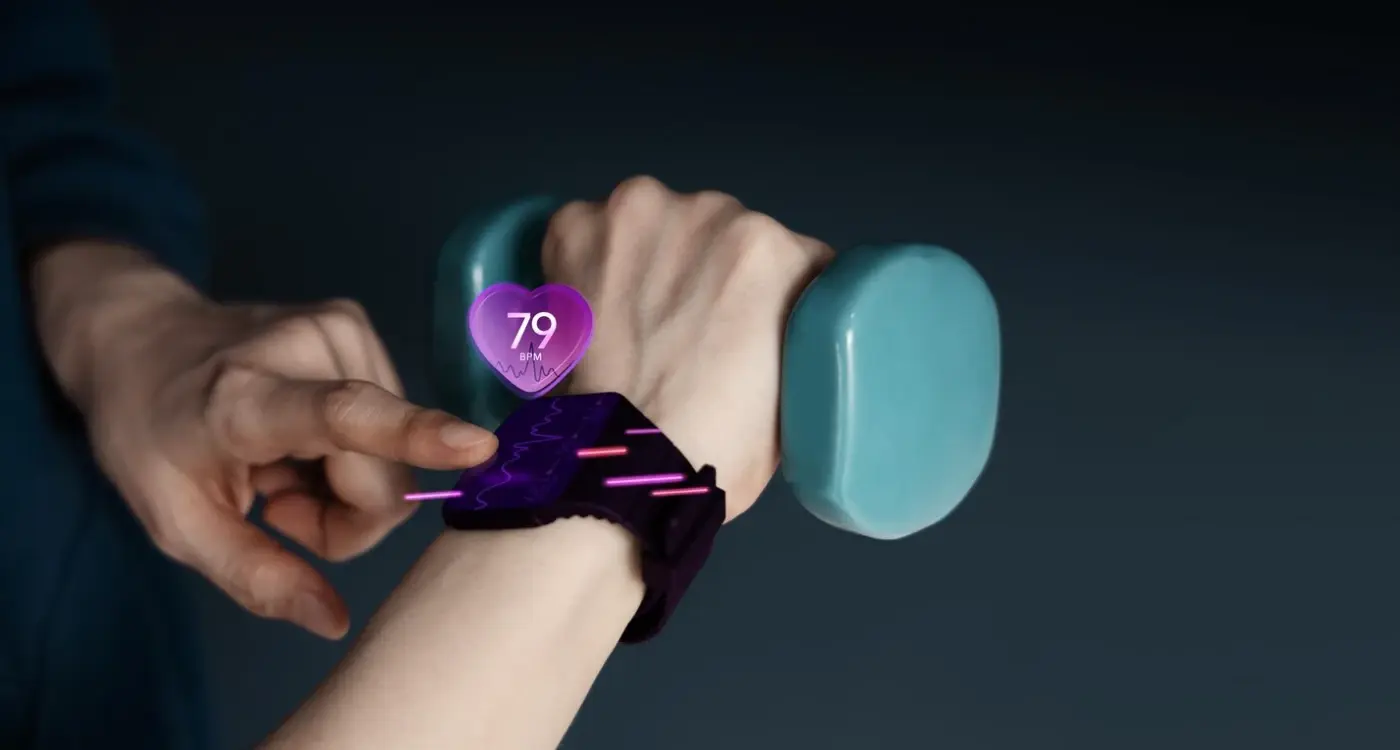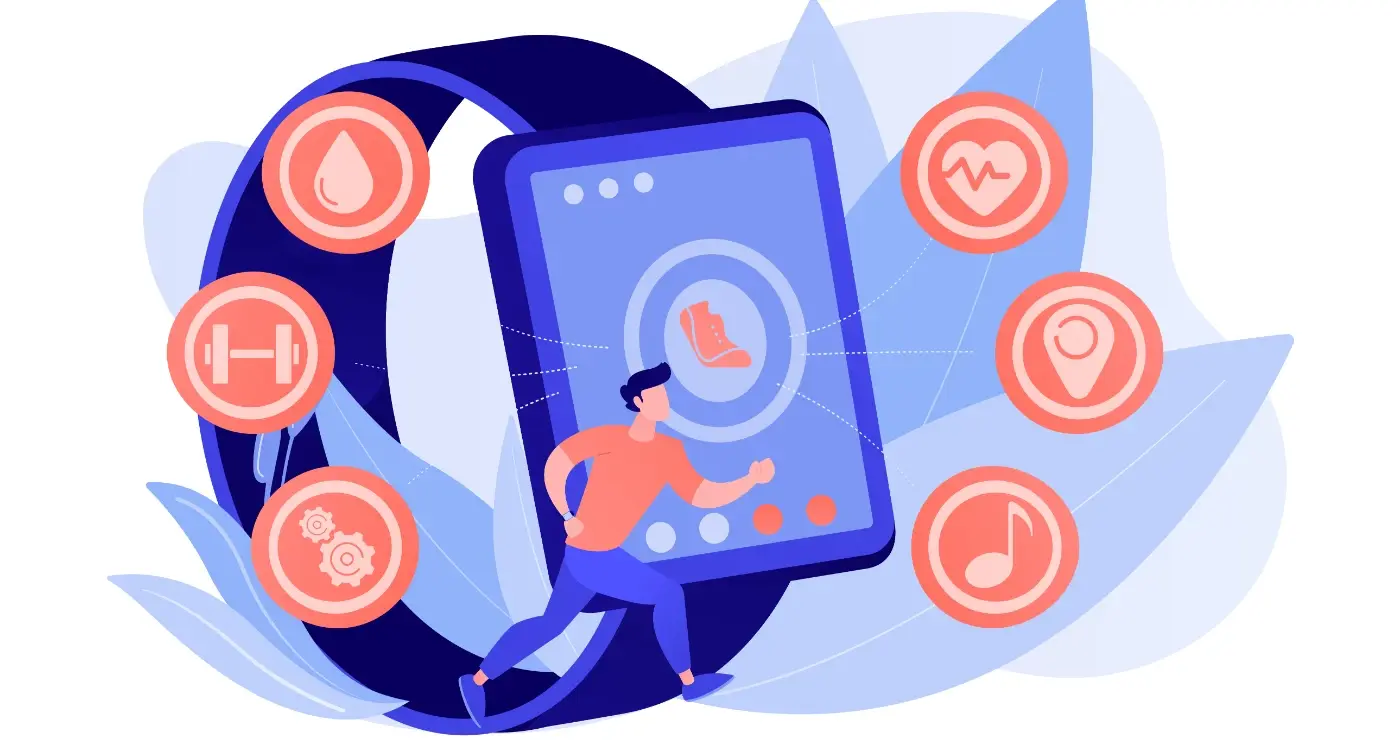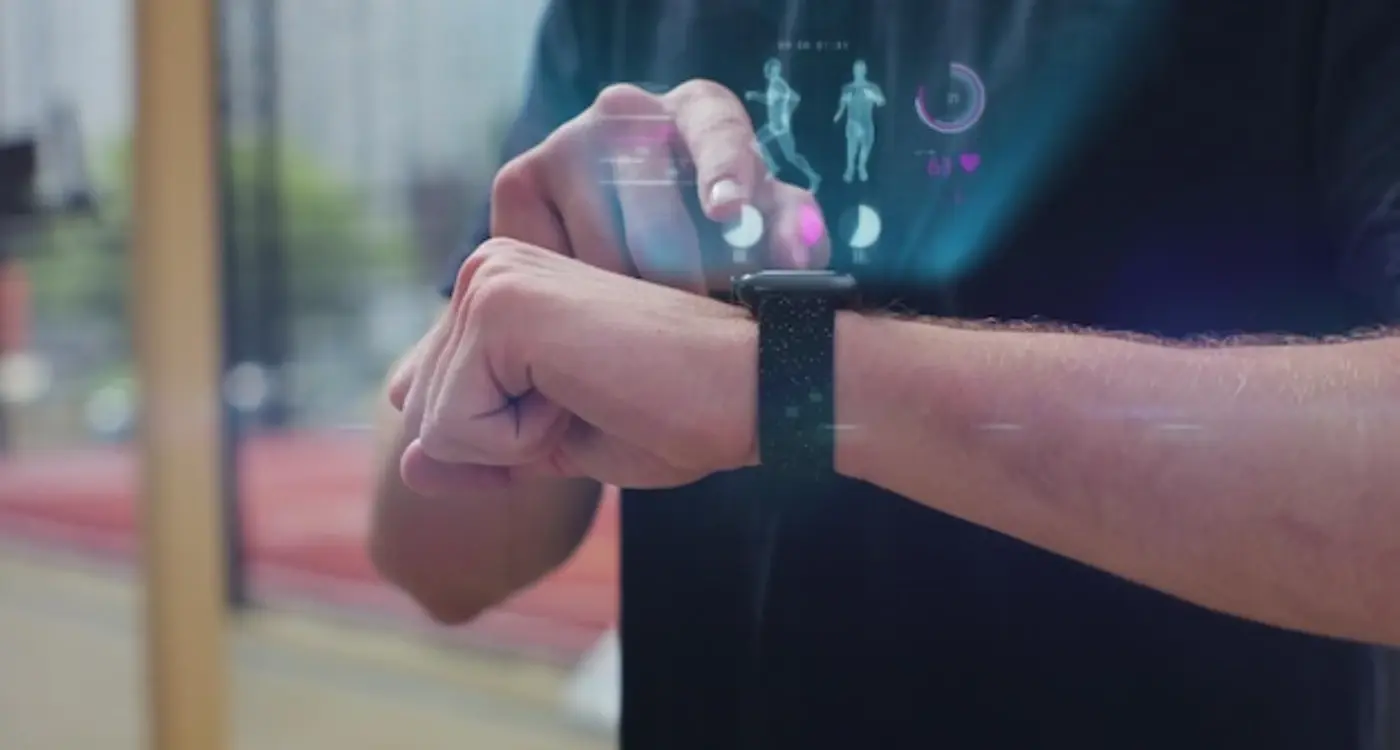Can Wearable Apps Work Independently Without A Phone?
A runner heads out for their morning jog, leaving their phone charging at home. Their smartwatch tracks every step, monitors their heart rate, and even streams music directly to their wireless earbuds. No phone needed. This scenario happens thousands of times daily across the country, yet many people still believe wearable devices are just glorified phone accessories.
The truth is, wearable apps have come a long way from their early days as simple notification mirrors. Modern smartwatches and fitness trackers can perform complex tasks entirely on their own—making calls, processing payments, navigating routes, and running sophisticated health monitoring systems. But here's where it gets interesting: not all wearable apps are created equal when it comes to independence.
The shift towards smartwatch independence represents one of the most significant changes in how we interact with technology on a daily basis
Some apps genuinely work standalone, whilst others just pretend to. Understanding the difference can save you from disappointment when you're miles from your phone and discover your favourite app won't function. The technology behind independent wearable apps is surprisingly complex; these tiny devices must pack powerful processors, their own internet connections, and efficient operating systems into something that weighs less than a chocolate bar. What's more, they need to do all this whilst lasting an entire day on a single charge.
This guide will help you understand what makes wearable apps truly independent, which devices can actually deliver on their promises, and where the technology still falls short.
What Makes a Wearable App Truly Independent
When we talk about independent wearable apps, we're referring to applications that can function completely on their own—without needing a smartphone nearby to work properly. Think of it like the difference between a remote-controlled toy car and a real car; one needs constant connection to something else, whilst the other can operate by itself.
The key thing that makes a wearable app truly independent is having all the necessary components built right into the device itself. This includes processing power to run the app, memory to store data, and—most importantly—its own internet connection. Without that internet connection, your wearable might be able to track your steps or show the time, but it won't be able to send messages, stream music, or update your social media.
Core Requirements for Independence
For a wearable app to work independently, the device needs several technical capabilities working together. The processor handles all the calculations and operations, whilst the memory stores both the app itself and any data it collects. Battery management becomes critical too—running apps independently uses more power than simply mirroring information from a phone.
- Built-in cellular or Wi-Fi connectivity for internet access
- Sufficient processing power to run applications smoothly
- Adequate storage space for apps and user data
- Battery capacity that supports extended independent use
- Compatible operating system that supports standalone apps
The reality is that not all wearable devices are designed for independence. Many are built as companions to smartphones, designed to extend your phone's capabilities rather than replace them. True independence requires manufacturers to pack much more technology into a much smaller space, which affects both cost and battery life—compromises that not every user wants to make.
Types of Wearable Devices and Their Capabilities
When we talk about smartwatch independence and wearable apps, it's worth understanding what different devices can actually do on their own. The wearable market has exploded over recent years—each type of device brings its own set of strengths and limitations when it comes to working without your phone.
Smartwatches: The Powerhouses
Smartwatches are the most capable when it comes to standalone operation. The best ones come with their own cellular connections, GPS chips, and enough processing power to run proper apps. They can make calls, send messages, stream music, and track your runs without needing your phone nearby. Some even let you pay for coffee or control smart home devices.
The catch? Battery life takes a hit when you use all these features. Most smartwatches need charging daily, sometimes more if you're pushing them hard.
Fitness Trackers and Specialised Wearables
Fitness trackers are brilliant at what they do best—tracking steps, heart rate, and sleep patterns. Many can work independently for basic functions, storing data until they sync with your phone later. Some higher-end models include GPS for route tracking without your phone.
Look for wearables with built-in storage and Wi-Fi capabilities if you want the most flexibility for phone-free use.
Smart earbuds deserve a mention too. While they're not traditional wearables, many now include fitness tracking, translation services, and can stream music directly from cloud services.
- Cellular connectivity for calls and data
- GPS for location services
- Local storage for music and apps
- Wi-Fi for internet access
- NFC for contactless payments
The reality is that true independence depends on what features your device includes—and how much battery life you're willing to sacrifice for the convenience.
How Standalone Wearable Apps Actually Work
Right, let's get into the technical bits—but don't worry, I'll keep this simple. When we talk about standalone wearable apps, we're talking about applications that can function completely on their own without needing a phone nearby. Think of your smartwatch as a tiny computer strapped to your wrist rather than just an extension of your phone.
These apps work by storing all their code and data directly on the wearable device itself. The watch or fitness tracker has its own processor, memory, and operating system—just like a smartphone but much smaller. When you open a standalone app, it runs entirely on the device's hardware; there's no secret connection happening with your phone in the background.
The Core Components That Make It Possible
For a wearable app to work independently, the device needs several key components working together:
- Built-in storage to keep the app files and your data
- A processor powerful enough to run the application smoothly
- Its own internet connection (usually Wi-Fi or cellular)
- Sensors like GPS, heart rate monitors, or accelerometers
- A battery system that can handle the extra workload
The clever part is how these apps manage data sync. When your wearable does connect to Wi-Fi or has cellular access, it can upload your fitness data, sync your music playlists, or download app updates. But during those times when you're completely disconnected—maybe you're out for a run without your phone—the app continues collecting data and storing it locally until the next sync opportunity.
It's worth mentioning that standalone apps need to be much more efficient than their phone counterparts. They can't afford to waste battery life or processing power, so developers have to be quite clever about how they build these applications.
The Benefits of Phone-Free Wearable Applications
When we talk about smartwatch independence and wearable apps that work without phones, we're really talking about freedom. Not having to carry your phone everywhere opens up possibilities that many people don't even realise they're missing out on.
The biggest win? You can exercise properly without worrying about where to put your phone or whether it'll survive your workout. Standalone wearable apps let you track runs, monitor heart rate, and even stream music directly to wireless earbuds—all whilst your phone sits safely at home. This is particularly brilliant for swimmers, cyclists, and anyone doing high-intensity sports where phones are just awkward.
Safety and Convenience
Emergency situations become less stressful when your smartwatch can call for help independently. Many standalone wearables include GPS tracking and emergency calling features that work through their own cellular connection. Parents love this for keeping track of children without giving them expensive smartphones.
The real game-changer isn't the technology—it's the peace of mind that comes from knowing you're always connected, even when you choose to leave everything else behind
Better Battery Life
Here's something counterintuitive: wearable apps often perform better when they're not constantly trying to sync with your phone. Without Bluetooth connections draining power and interrupting processes, standalone apps can focus entirely on their core functions. This means longer battery life and more reliable performance when you need it most.
The simplicity factor can't be ignored either. One device doing one job well beats juggling multiple gadgets that need to talk to each other constantly.
Common Limitations You Should Know About
Let's be honest here—standalone wearable apps aren't perfect. After years of working with these devices, I've seen plenty of projects where clients had unrealistic expectations about what their wearable app could achieve without a phone connection.
Battery life is probably the biggest headache you'll face. When your wearable is doing all the heavy lifting—processing data, maintaining connections, running apps—it drains power much faster than when it's just a companion device. Most smartwatches struggle to last a full day when running intensive standalone applications.
Technical Constraints That Matter
Processing power is another reality check. Wearables have tiny processors compared to smartphones, which means complex calculations or data-heavy operations can slow things down considerably. Storage space is equally limited—you're typically working with just a few gigabytes at most.
The user interface presents its own challenges too. Try typing a long message on a tiny screen and you'll understand why most wearable interactions need to be quick and simple. Voice commands help, but they don't work well in noisy environments or quiet spaces where you need to stay silent.
Connectivity Issues
Network connectivity can be patchy. Not all wearables support cellular connections, and those that do often have weaker signals than phones. WiFi-only devices become pretty useless once you're away from a known network.
- Limited battery life during intensive use
- Restricted processing power for complex tasks
- Small storage capacity
- Challenging user interface design
- Inconsistent network connectivity
- Higher development costs
- Limited app ecosystem compared to phones
Development costs tend to be higher too since you're building for specialised hardware with unique constraints. The app stores for wearables also have smaller audiences, which might affect your return on investment.
Real-World Examples of Independent Wearable Apps
Let me show you some actual apps that demonstrate true smartwatch independence. These aren't just fancy phone notifications on your wrist—they're proper standalone applications that work without any phone nearby.
Fitness and Health Apps
Nike Run Club works brilliantly on Apple Watch without needing your phone. You can track runs, log workouts, and even get audio coaching directly through the watch's speaker. The app stores your data locally and syncs everything when you're back in WiFi range. Strava does something similar—recording your cycling routes, measuring heart rate, and keeping track of personal records all independently.
Sleep tracking apps like AutoSleep monitor your rest patterns throughout the night using just the watch's sensors. No phone required under your pillow or on your bedside table.
Productivity and Communication
Voice memo apps are surprisingly useful on standalone wearables. You can record thoughts, shopping lists, or meeting notes directly onto the watch's storage. Some email apps let you read and respond to messages using voice-to-text, though typing longer responses gets a bit fiddly on such a small screen.
Music streaming services like Spotify Premium allow you to download playlists directly to your watch. Connect Bluetooth headphones and you've got a complete music system without carrying a phone—perfect for workouts or quick trips to the shops.
When choosing standalone wearable apps, look for ones that can store data locally and sync later. This gives you the best of both worlds—true independence when you need it, plus seamless data backup when connected.
Payment apps demonstrate wearable apps at their most practical. Contactless payments work completely independently, making your watch a genuine phone replacement for quick purchases.
Conclusion
So can wearable apps work independently without a phone? The answer is both yes and no—it depends entirely on what you're trying to do and which device you're using. Some wearables have built-in cellular connectivity, GPS, and enough processing power to run apps completely on their own. Others need a phone nearby to function properly.
The Apple Watch with cellular capability can make calls, stream music, and run apps without your iPhone in sight. Fitness trackers like the Garmin Fenix series can record detailed workouts, navigate routes, and store thousands of songs for offline listening. These devices prove that standalone wearable apps aren't just possible—they're already here and working brilliantly for millions of people.
But let's be honest about the limitations too. Battery life remains a real challenge when wearables work independently; cellular connectivity and GPS drain power quickly. The small screens and limited input methods mean some tasks will always be easier on a phone. And not every wearable device has the hardware needed for true independence—many still rely on Bluetooth connections to your smartphone.
The technology is advancing rapidly though. Each generation of wearable devices becomes more capable, with better batteries, faster processors, and improved connectivity options. What seemed impossible just a few years ago is now standard on many devices.
If you're considering developing a wearable app or choosing a device for independent use, think carefully about your specific needs. Match the device capabilities to your requirements rather than assuming all wearables are created equal. The future of independent wearable apps looks promising—we're just getting started with what's possible when you untether from your phone.
Share this
Subscribe To Our Learning Centre
You May Also Like
These Related Guides

What Happens When Your Wearable App Loses Connection?

How Do You Pick the Right Sensors for Your Wearable App?



